The theme of this year’s Martin Luther King, Jr Day Parade is “The Dream Continues to Live and Grow.” Los Angeles County Supervisor Mark Ridley-Thomas will be the parade’s grand marshal.
The parade is set to begin at 11 a.m. at Martin Luther King Jr. Boulevard and Western Avenue in South Los Angeles, head west on Martin Luther King Jr. Boulevard to Crenshaw Boulevard, then south to Vernon Avenue, concluding at Leimert Park, where a festival will be held.
Here’s the map:
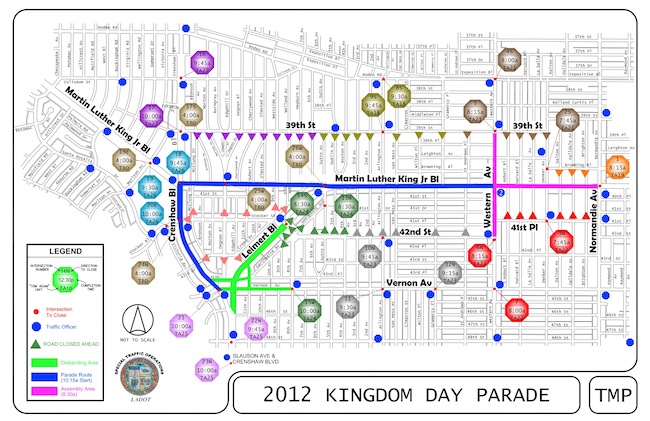









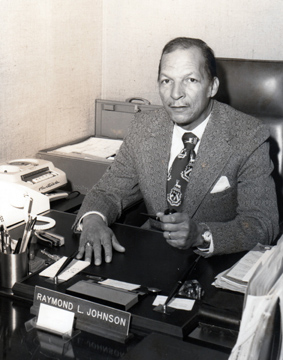 In the same pulpit that Dr. Martin Luther King Jr. stood at nearly 43 years earlier, Reverend Henry Masters delivered the departing words for lawyer Raymond L. Johnson, Sr. Thursday morning. Although Johnson never received the acclaim that King did, it was clear from the moment the service began that Johnson touched the lives of nearly everyone sitting in the sanctuary at the Holman United Methodist Church.
In the same pulpit that Dr. Martin Luther King Jr. stood at nearly 43 years earlier, Reverend Henry Masters delivered the departing words for lawyer Raymond L. Johnson, Sr. Thursday morning. Although Johnson never received the acclaim that King did, it was clear from the moment the service began that Johnson touched the lives of nearly everyone sitting in the sanctuary at the Holman United Methodist Church. 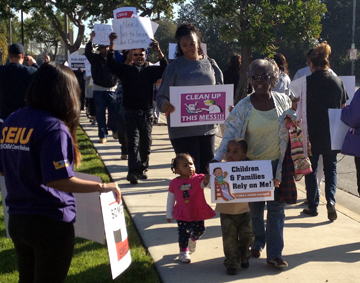 As of Thursday morning, Ruby Evans had only $18.65 in her bank account. She runs Evans Family Day Care in Compton, one of many centers contracted by the state of California to provide subsidized child care.
As of Thursday morning, Ruby Evans had only $18.65 in her bank account. She runs Evans Family Day Care in Compton, one of many centers contracted by the state of California to provide subsidized child care. No one from the agency responded to the protest aside from a security officer who stepped out to take down the notes.
No one from the agency responded to the protest aside from a security officer who stepped out to take down the notes. Amidst the urban sprawl of South Los Angeles, a 10-acre plot of land is being converted into a much-needed green retreat, just blocks away from Slauson Boulevard, in a noticeably park-poor neighborhood.
Amidst the urban sprawl of South Los Angeles, a 10-acre plot of land is being converted into a much-needed green retreat, just blocks away from Slauson Boulevard, in a noticeably park-poor neighborhood. The first alley is located two blocks north of the South LA Wetlands Park, and many residents are excited about the recent push to beautify their community and clean up the alleys, said Ramsey.
The first alley is located two blocks north of the South LA Wetlands Park, and many residents are excited about the recent push to beautify their community and clean up the alleys, said Ramsey. LA Stormwater website, the second and final phase of construction is to build a historical railway museum highlighting its history in Los Angeles and a multi-use community center.
LA Stormwater website, the second and final phase of construction is to build a historical railway museum highlighting its history in Los Angeles and a multi-use community center. “¡Ay Jalisco, No Te Rajes!” (Jalisco, Don’t Back Down) – 1941. (Photo courtesy Concepción Bauza.)
“¡Ay Jalisco, No Te Rajes!” (Jalisco, Don’t Back Down) – 1941. (Photo courtesy Concepción Bauza.)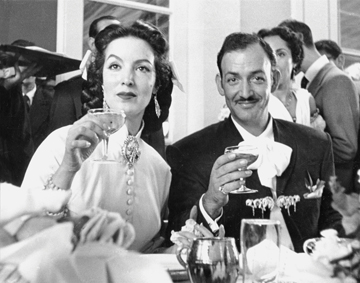 Wedding of María Felix and Jorge Negrete – 1952.
Wedding of María Felix and Jorge Negrete – 1952. Exhibit photos at the Mercado.
Exhibit photos at the Mercado.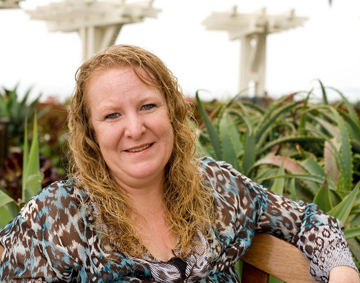 Wendy Barnes escaped a life of forced prostitution and is now an advocate helping young girls escape sex slavery. (Photo credit: Wendy Barnes)
Wendy Barnes escaped a life of forced prostitution and is now an advocate helping young girls escape sex slavery. (Photo credit: Wendy Barnes) A South L.A. Motel.
A South L.A. Motel.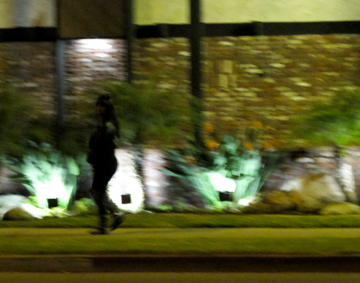 A young prostitute walking the street in South L.A.
A young prostitute walking the street in South L.A. Family pictures adorn Wendy Barnes’ current home, a sign of happier times after a painful past.
Family pictures adorn Wendy Barnes’ current home, a sign of happier times after a painful past. 



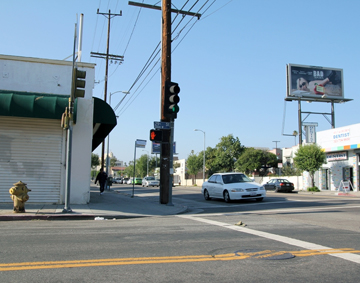 The intersection at 29th and Western, a popular corner for prostitutes. (Photos: Lisa Rau)
The intersection at 29th and Western, a popular corner for prostitutes. (Photos: Lisa Rau)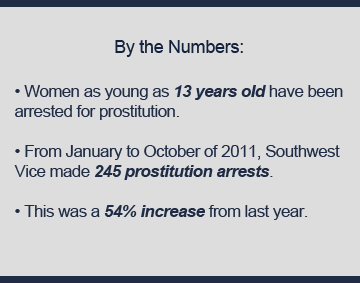 Dubbed the Figueroa Corridor Project, the program was extended in early 2011 to include the Western Corridor, which encompasses McGuyre’s patrol area. A city attorney has been assigned specifically to prosecute all of LAPD Southwest’s prostitution-related arrests.
Dubbed the Figueroa Corridor Project, the program was extended in early 2011 to include the Western Corridor, which encompasses McGuyre’s patrol area. A city attorney has been assigned specifically to prosecute all of LAPD Southwest’s prostitution-related arrests. After getting no response, the couple began a Twitter account,
After getting no response, the couple began a Twitter account, 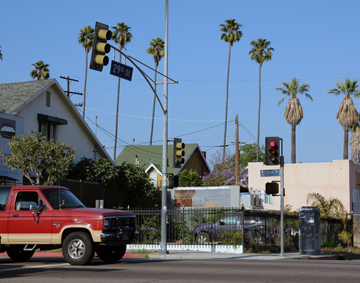 During the day, the corner of 29th and Western is quiet.
During the day, the corner of 29th and Western is quiet.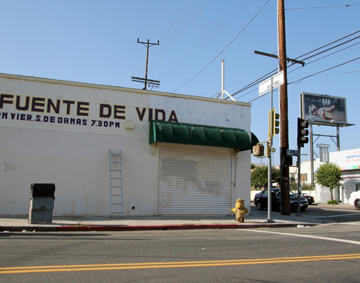 Jones and Smith can hear traffic increase at the intersection of 29th and Western at night, when the johns slow down to talk to prostitutes.
Jones and Smith can hear traffic increase at the intersection of 29th and Western at night, when the johns slow down to talk to prostitutes.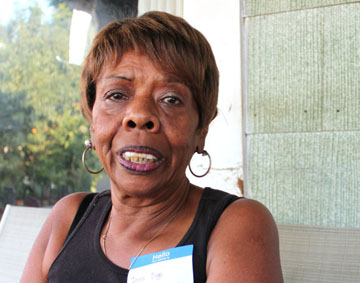 For the past four months, journalist and USC student Melissa Leu visited the monthly meetings of the neighborhood council Voices of 90037. During her time, she found out a lot about how hyper-local politics operate in underserved communities. Voices of 90037 represent the a strip just north of Watts. It sits between the 110 and Flower Street, south of Martin Luther King Jr. Boulevard to 62nd Street.
For the past four months, journalist and USC student Melissa Leu visited the monthly meetings of the neighborhood council Voices of 90037. During her time, she found out a lot about how hyper-local politics operate in underserved communities. Voices of 90037 represent the a strip just north of Watts. It sits between the 110 and Flower Street, south of Martin Luther King Jr. Boulevard to 62nd Street.




